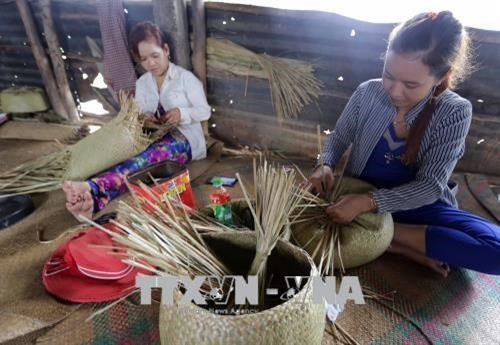With the training, the rate ofthe province’s trained labourers will reach 67 percent by 2020 compared to 48 percentthis year. The province aims to have more than 80 percent of trainees with jobsrelated to their vocational skills.
The province’s four keyeconomic sub-regions will provide vocational training according to the demandsof each sub-region, said the provincial Department of Agriculture and RuralDevelopment.
The province’s Long XuyenQuadrangle sub-region will focus on providing vocational training inaquaculture, cultivation, animal husbandry, fishing, seafood processing andboat engine repair.
The province’s westernsub-region near the Hau River will provide vocational training in seafoodprocessing and other fields to meet recruitment demand for Thanh Loc and Vinh HoaHung industrial parks and Tac Cau fishing port.
The sub-region will also focuson vocational training for rural labourers in fresh water aquaculture, animaland poultry husbandry, and fruit and high quality rice cultivation.
The U Minh Thuong sub-regionwill provide vocational training related to fish ports and post fishinglogistics, rice-rotation cultivation models, and other aquatic species in ricefields, brackish-water and saltwater aquaculture, and animal husbandry.
Vocational training in islandand coastal areas will focus on saltwater aquaculture, plant cultivation,animal husbandry, and training of ship captains, ship engine captains,fishermen and sailors.
Mai An Nhin, Vice Chairman ofthe provincial People’s Committee, said for vocational training in rural areasto be effective, the province will provide more consultations on vocationaltraining and jobs.
Vocational trainees will havejobs in industrial parks and enterprises, or will start their own agriculturalproduction, he said.
The province will also buildvocational training curricula suited to the demand of each locality, invest inmore equipment used for vocational training and call on investors to joinhands.
It will also develop zonedindustrial parks, industrial park clusters and its four key economicsub-regions, which will offer jobs for vocational trainees, he said.
The province’s vocationaltraining programmes have increased incomes for rural labourers in recent years.
In An Minh district, a poordistrict in the province, short-term vocational skill training courses haveattracted many labourers and helped them find jobs.
The district has opened 16short-term vocational training courses in the agricultural and non-agriculturalsectors this year. More than 75 percent of the trainees in the courses havefound jobs, mostly in their localities, according to the district’s People’sCommittee.
Kien Giang has also organisedmany efficient agricultural production models for rural labourers. They includebreeding marble goby, turtles and snakes in An Minh District, breeding fish infloating cages in Kien Hai and Kien Luong districts, and planting pepper andhigh quality rice in Kien Luong district.
Labourers who plant pepper orhigh quality rice in Kien Luong district can earn an average income of 3–5million VND (128-213 USD) a month.-VNA





























